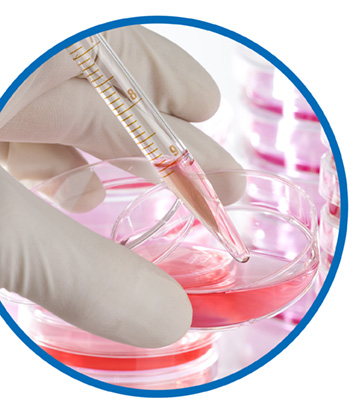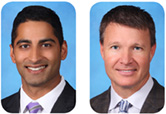By Raj N. Sureja, MD and Mark W. McFarland, DO
 Far too often, we see patients with conditions for which we have limited treatment options, in both scope and efficacy. Once in a lifetime, real scientific advances are made that change everything for the patient and the physician. Regenerative Medicine is a real game-changer, in that it potentially allows physicians to heal patients in ways only once imagined.
Far too often, we see patients with conditions for which we have limited treatment options, in both scope and efficacy. Once in a lifetime, real scientific advances are made that change everything for the patient and the physician. Regenerative Medicine is a real game-changer, in that it potentially allows physicians to heal patients in ways only once imagined.
Due to advancements in immunology, cellular biology, molecular engineering and refinements in existing technologies, science is discovering the previously inaccessible reformative power of the patient’s own cells to rebuild damaged or diseased organs, tissue, or bone. Diseases like heart disease, diabetes, and arthritis may one day be completely cured, instead of controlled.
You are familiar with the donation of organs for transplantation into ill patients for the purpose of saving their lives. Perhaps you have used autologously donated bone marrow for the treatment of leukemia and other types of cancers. These types of procedures were the genesis of today’s Regenerative Medicine.
In the early days of stem cell research, the cells were collected from aborted human embryos, with all the attending ethical and moral issues. Today, stem cells are donated by patients from their own bone marrow. Alternatively, amniotic stem cells are collected from placentas of babies born by C-section in accredited hospital collection centers. Parents consent to this before fetal delivery, and are paid for the amniotic fluid, which is then sterilized and frozen for later use.
Regenerative Medicine is divided into several subspecialties: Rejuvenation, Regeneration and Replacement.
Rejuvenation involves using the body’s cells to heal itself. Just as the skin can repair itself, so can more complex tissues, like the heart and lungs.
Regeneration requires the delivery of cells or cell products, by injection, to certain areas of the body, to stimulate healing of diseased or damaged tissues or organs. Stem cell or platelet-rich plasma (PRP) are used to heal musculoskeletal conditions, such as arthritic joints, damaged cartilage, partially torn ligaments and tendons, bursitis, and degenerative discs in the lower back.
Replacement involves replacing damaged or diseased organs with healthy cells, tissues or organs from living or deceased donors. This includes being able to grow healthy organs in a laboratory for implantation into the patient’s own cells, effectively ending organ shortages, the issue of organ rejection and the challenge of patient immunosuppression.
Regenerative Medicine uses autologous or amniotic stem cells, which can develop into many types of cells through a process called differentiation. Autologous stem cells cannot be rejected, and some studies show that one out of every three people could benefit from treatment with Regenerative Medicine. As so many people in the United States are afflicted with arthritis and other musculoskeletal problems, such as back pain, rotator cuff tears, meniscal tears, etc., stem cell therapy is an excellent non-surgical therapy for patients who cannot have surgery or who choose not to.
 Raj N. Sureja, MD (L) is a fellowship-trained, Board certified Interventional Pain Management Specialist. Mark W. Mcfarland, DO (R) is a fellowship-trained, Board certified Orthopaedic Spine Specialist. Both were named a “Hampton Roads Top Doc for 2015” by Coastal Virginia Magazine and practice at Orthopaedic & Spine Center in Newport News, VA.
Raj N. Sureja, MD (L) is a fellowship-trained, Board certified Interventional Pain Management Specialist. Mark W. Mcfarland, DO (R) is a fellowship-trained, Board certified Orthopaedic Spine Specialist. Both were named a “Hampton Roads Top Doc for 2015” by Coastal Virginia Magazine and practice at Orthopaedic & Spine Center in Newport News, VA.

